Numbers and facts.
Jusant
Jusant explores the future of mobility in a world transformed by climate collapse. Set in a +4°C scenario where entire regions are abandoned, the project focuses not on mass migration to northern megacities, but on those who choose to stay behind — the EcoNomads. These resilient communities live seasonally, adapting to extreme conditions by relocating between highlands and inland zones. Jusant proposes a modular electric scooter with soft-track propulsion, designed for off-grid life in post-infrastructure landscapes. Crafted from bioplastic sourced from invasive Mediterranean algae, the vehicle transforms ecological disruption into circular design. More than a means of transport, it is a tool for survival, autonomy, and connection — allowing users to move goods, repair systems, or simply explore. Rooted in speculative design and systems thinking, Jusant embodies a new relationship between humans, climate, and movement: slow, sustainable, and grounded in what remains after the tide recedes.
Project Information
Jusant is a speculative design project that explores how mobility could evolve in the context of extreme climate change. Set in the year 2054, the project envisions a world that has surpassed +4°C of global warming, triggering mass migrations, ecosystem collapse, and the withdrawal of governmental infrastructure from vast areas of land. While most of the population retreats into hyper-dense megacities in more temperate zones, Jusant focuses on those who choose a different path: to stay, adapt, and build new forms of life in the spaces left behind.
These individuals — the EcoNomads — represent a growing fringe of communities who live seasonally between valleys and mountains, cultivating low-impact, self-sufficient lifestyles. Their values are grounded in autonomy, slowness, repair culture, and reconnection with the land. Within this context, Jusant proposes a vehicle not built for speed or convenience, but for resilience and purpose.
The result is a modular electric scooter, equipped with a soft-track drivetrain capable of handling broken terrain and off-grid conditions. Its construction uses bioplastic derived from invasive algae species proliferating along the Mediterranean coast — turning an ecological threat into a design resource. Jusant is not just a machine; it’s a mobility tool shaped by a future where survival depends on adaptability, circularity, and community.
Methods
This project is rooted in speculative design, using narrative and foresight to project how mobility might evolve in a world affected by climate collapse. The process began by researching scientific and sociological scenarios of global warming — particularly +4°C trajectories outlined in Gaia Vince’s The Nomad Century. These insights informed the fictional, yet plausible, world of Jusant, where migration, decentralization, and climate adaptation reshape society.
A combination of worldbuilding, persona creation, and contextual mapping was used to anchor the project in a believable future. Personas like Jean and Edme — a céramiste and a mechanic — helped explore how individuals might live, move, and interact with their environment. These characters shaped functional decisions, like vehicle range, modularity, and ease of maintenance.
The project also included comparative case studies (such as mobility in Senegal) to understand how transportation systems evolve under minimal infrastructure. Design benchmarks ranged from cargo bikes to enduro motorcycles, which helped position the scooter within a new category of off-grid utility vehicles.
Material exploration played a central role. The use of algae-based bioplastics is both contextual and symbolic. Climate change is accelerating the spread of invasive species like Caulerpa taxifolia, especially along southern European coastlines. Rather than ignoring this disruption, Jusant integrates it into the design — sourcing local, problematic biomass and transforming it into lightweight, recyclable panels. This approach embodies circular economy principles and anchors the project in a believable future of constrained, localised production.
Design development was carried out using iterative 3D sketching, modular testing, and exploration of soft-robotic principles for the drivetrain. Inspirations from soft mobility systems, low-tech mechanics, and wearable tech helped shape a vehicle that is practical, tactile, and intuitive — while avoiding overly futuristic or techno-optimistic aesthetics.
Result
The final outcome is a compact, versatile electric scooter that embodies low-impact, post-infrastructure mobility. Jusant features a soft-track drivetrain that replaces wheels with a low-maintenance, terrain-friendly propulsion system. The design is modular, allowing the user to attach different front and rear elements depending on use: a seat for passengers, a cargo rack, a workshop module, or even a small traveling shop. This modularity reflects the multifunctional lives of the EcoNomads, where transport must support work, trade, repair, and movement.
The onboard AI assistant supports navigation in unstable or dangerous environments but remains deliberately unobtrusive. It serves the user, never replacing them. The goal is to maintain control and intuition in the ride — a key emotional component in designing for people who have chosen autonomy over comfort.
Visually, Jusant draws inspiration from rugged outdoor gear, sneakers, and utilitarian design — with smooth, repairable surfaces, and a warm, robust aesthetic. The use of algae-based bioplastic is visible, not hidden: it’s part of the story, part of the surface, part of the message. This transparency in materials and function reinforces the project’s values of honesty, sustainability, and resourcefulness.
In conclusion, Jusant is not a vision of the future where everything is fixed — but of one where humans find new ways to live with what remains. It invites reflection on how mobility, materials, and human values could evolve when infrastructure collapses, and where design becomes a tool for survival, dignity, and quiet resistance.
UID25 | Antonin Girard – Grad project presentation
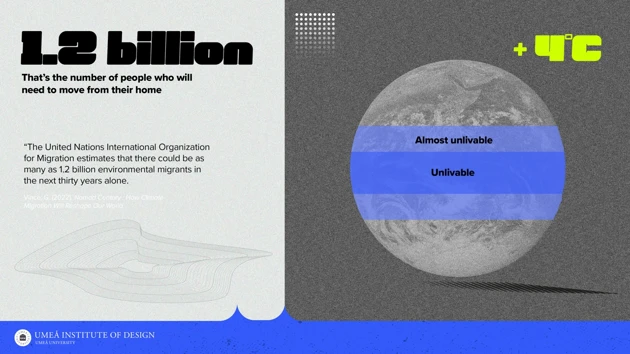
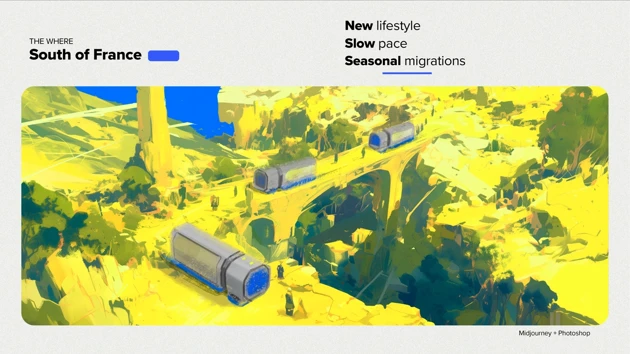
Context.
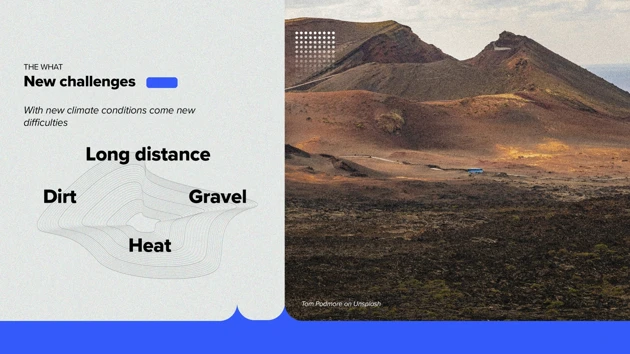
Environment and conditions.
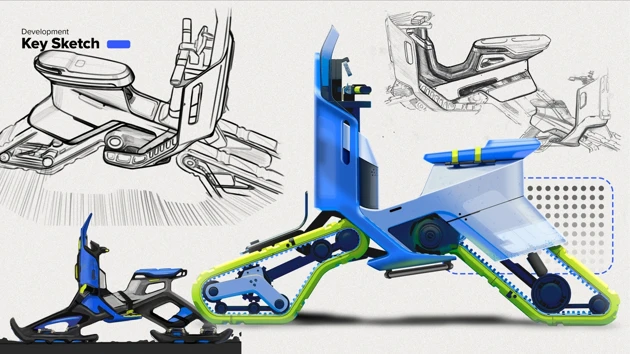
Sketches and development.
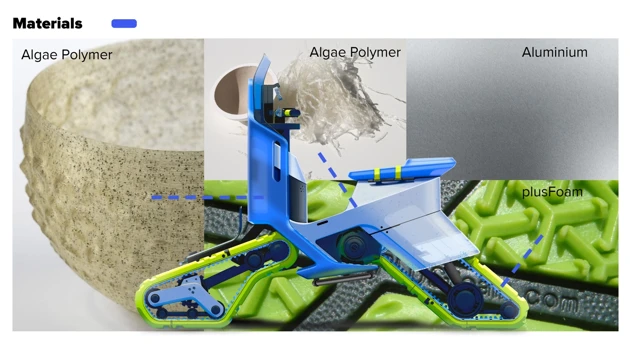
Materials and CMF.
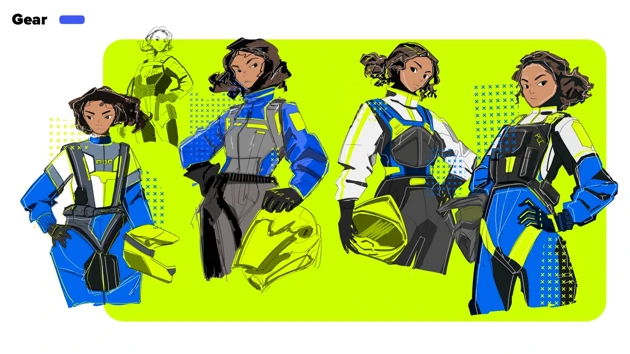
Worldbuilding through the development of an outfit for the user.
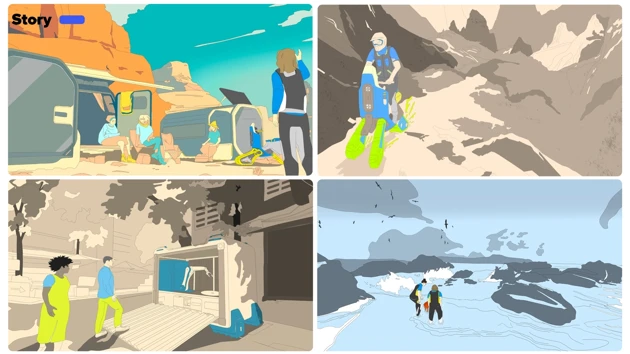
While visting friends, Jean take a glimpse of this scooter, asking for a ride, he loves it, using Fabpods coming in certain cities, they gather algae to be able to feed the printer and produce a scooter as wellWhile visting friends, Jean take a glimpse of this scooter, asking for a ride, he loves it, using Fabpods coming in certain cities, they gather algae to be able to feed the printer and produce a scooter as well.
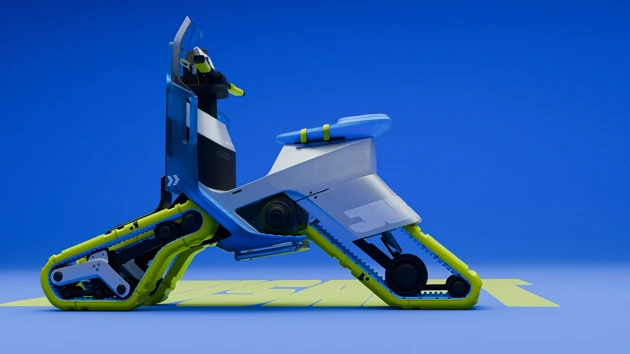
Studio shot.
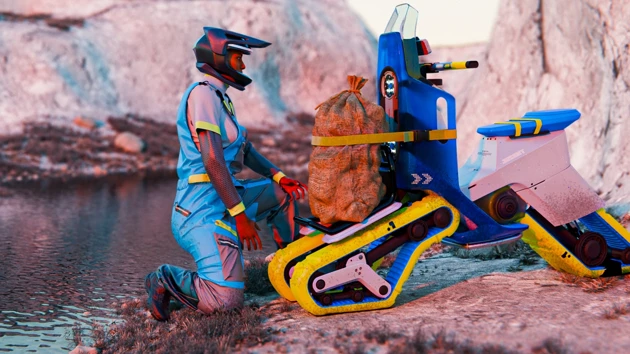
Attachment shot.

Action shot.












